Historically we learnt to use width instead of left & right because IE6 didn't support
at the same time the two properties of the same axis
<div style="top:0;bottom:0;position:absolute;">modern browsers</div>
<div style="top:0;height:100%;position:absolute;">MSIE6</div>
<div style="left:0;right:0;position:absolute;">modern browsers</div>
<div style="left:0;width:100%;position:absolute;">MSIE6</div>
<div style="left:0;right:0;top:0;bottom:0;position:absolute;">modern browsers</div>
<div style="left:0;top:0;height:100%;width:100%;position:absolute;">MSIE6</div>
Also, this technique will not work on some elements (including on modern browsers, by spec )
<!-- these will not work -->
<!-- edit: on some browsers they may work,
but it's not standard, so don't rely on this -->
<iframe src="" style="position:absolute;top:0;bottom:0;left:0;right:0;"></iframe>
<textarea style="position:absolute;top:0;bottom:0;left:0;right:0;"></textarea>
<input type="text" style="position:absolute;left:0;right:0;">
<button ... ></button>
and possibly others... (some of these can't even be display:block)
But, analysing what happens in the normal static flow using the width:auto property
<div style="width:auto;padding:20px;margin:20px;background:lime;">a</div>
You will see it's very similar to...
<div style="width:auto;padding:20px;margin:20px;background:lime;
position:absolute;top:0;left:0;bottom:0;right:0;">b</div>
... same properties with the same values! This is really nice! Otherwise it will look like:
<div style="width:100%;height:100%;
position:absolute;top:0;left:0;">
<div style="padding:20px;margin:20px;
background:lime;">c</div>
</div>
Which is also different, because the inner div doesn't fill the y axis.
To fix this we will need css calc() or box-sizing and an unnecessary headache.
My answer is, left + right | top + bottom are really cool since they are closest to the static positioning's width:auto
and there is no reason to not use them. They are way easier to use compared to the alternative and they
provide much more functionality (for example, using margin-left, padding-left and left at the same time in
one single element).
left + right | top + bottom is considerably
better supported by browsers compared to the alternative width:100% + box-sizing | calc()
and it's also easier to use!
Of course if you don't need (as in your example) to grow the element also in the y axis,
width:100% using some nested element for the padding, it's the only solution to archive support also for MSIE6
So, depends by your needs. If you want to support MSIE6 (it's the only actual reason to do that) you should use with:100%, otherwise use left + right!
Hoping to be helpful.
